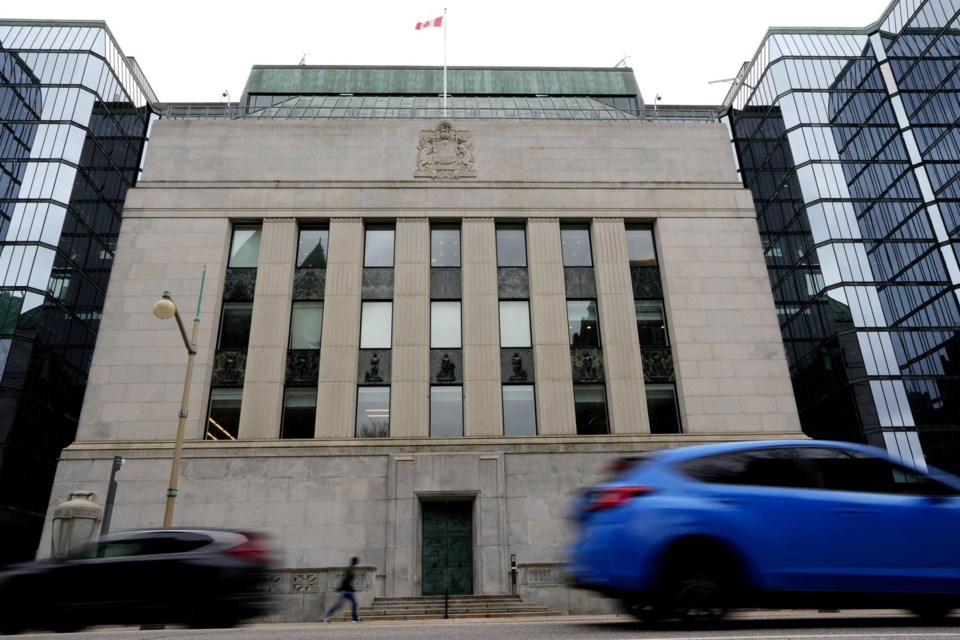OTTAWA — New meeting records show the Bank of Canada's top decisionmakers were weighing an interest rate cut earlier this month but didn't feel like they knew enough about how the tariff dispute with the United States would unfold to pull the trigger.
The central bank on Tuesday released the summary of deliberations behind its decision to hold its policy rate steady at 2.75 per cent roughly two weeks ago.
Those documents show Canada's trade war with the United States dominated conversation among the governing council.
“The primary source of uncertainty — and the biggest threat facing the Canadian economy — was the trade conflict initiated by the United States,” the deliberations read.
Canada’s tariff dispute with the United States kicked off in March, though the exact level of import duties has fluctuated since then.
Currently, there are some exemptions from tariffs and counter-tariffs for firms in each country, but the Canadian steel, aluminum and automotive industries remain under particular pressure from U.S. President Donald Trump’s trade agenda.
While monetary policymakers broadly agreed that there was some “cautious optimism” that risks of a severe global trade war had diminished, the deliberations noted U.S. trade policy “remains unpredictable.”
“This was underscored by President Trump’s announcement during deliberations that he would double tariffs to 50 per cent on steel and aluminum exports to the United States,” the meeting notes read.
Trump delivered on that threat a few days later — the morning of the Bank of Canada’s rate decision.
While the governing council noted the economy was showing “more resilience than expected” to date, expectations for the second quarter were “much weaker.” The deliberations signalled some concern about softness in the labour market and noted home sales were slowing, with Toronto and Vancouver in particular seeing weakness.
At the same time, monetary policymakers spent “considerable time” discussing inflation and noted how hard it could be to track the evolution of price pressures going forward.
While Ottawa’s removal of the consumer price on carbon was offering some temporary reprieve in the inflation figures, the governing council noted tariff impacts on prices could be stickier.
The records show trade uncertainty, combined with signs of stubbornness in underlying inflation, ultimately convinced the Bank of Canada's decisionmakers to leave the policy rate unchanged.
There was a bit more debate over the path forward for monetary policy, depending on how the tariff dispute affected prices and the strength of the economy.
“The weaker the economy and the more downward pressure on inflation, the more there would be a need to lower the policy interest rate further. However, if the recent firmness in underlying inflation were to persist, it would be more difficult to cut the policy rate,” the deliberations read.
The Bank of Canada’s next interest rate decision is set for July 30.
This report by The Canadian Press was first published June 17, 2025.
Craig Lord, The Canadian Press




